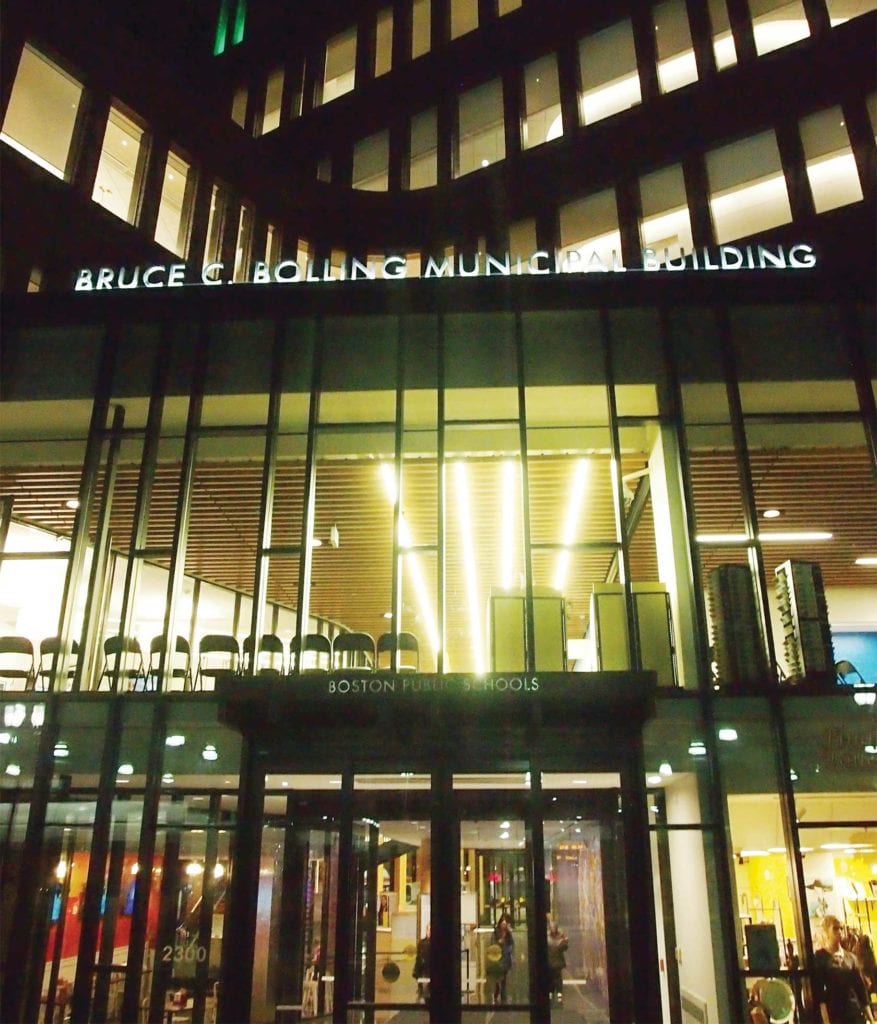
After considerable pressure from the state to reopen, Boston Public Schools is following through on its plan to send kids into classrooms this week. School buildings were closed due to a snowstorm on Monday and Tuesday but were scheduled to open Wednesday.
The revised reopening schedule was finalized Jan. 11, when BPS and the Boston Teachers Union agreed to start phasing in students on Feb 1. The parties did not agree on a threshold to send students home, unlike the original plan, which shut schools down at a 5% COVID-19 positivity rate in the city. BPS now relies on protocols from the Boston Public Health Commission, which considers transmission low in schools.
The Boston Public Schools Health Services reopening planning document does require Boston to stay in the green or yellow zone in order to have in-person learning.
“In order for our school district to reopen and stay open, the average daily cases per 100,000 must remain at 8 or under using a 7-day rolling average,” the Dec. 12 BPS Health Services document reads.
Per these regulations, BPS is not safe to reopen, as Boston is currently reporting 42 cases per 100,000. Though the city is on a steady decline in the seven-day average of positive cases, there is still significant community spread in neighborhoods where the majority of BPS students live.
The transition to in-person learning will start with students with disabilities and high needs, though in-person learning is still optional. According to BPS data from Jan. 15, out of 51,212 students, 22,630 of them — 44% — have chosen to remain fully remote while 43% of students have opted for hybrid learning.
But the percentages of remote and hybrid students varies greatly by school. For example, among Fenway High School’s 388 students, nearly 50% of families chose remote-only learning. Over at the Boston Day/Evening School, the majority of students are signed up for hybrid learning.
Learning preference also varies by race. A majority of white families opted for in-person learning, while majorities of Black, Latinx and Asian families chose remote. Asian families exhibit the highest level of hesitancy for in-person, with 59.68% of Asian learners being fully remote.
Neighborhoods such as Chinatown, South End, Fenway, Dorchester and Mattapan are slightly higher in preference for remote learning than Downtown and South Boston, Charlestown and Allston/Brighton. West Roxbury has the lowest number of fully remote learners at 29.86%. Neighborhoods with the largest Black populations are still experiencing the most COVID-19 cases. Of the cases where the patient’s race is known, 24% of them are Black, according to the BPHC. Black COVID patients have accounted for 33% of Boston’s deaths from the disease.
The BPHC, BPS and the federal Centers for Disease Control and Prevention (CDC) base safety in schools not on the low rate of transmission within classrooms, but on the low rate of transmission within communities. BPS has maintained less than five active cases in the majority of schools for the entirety of the school year with limited numbers of students in buildings, but the surrounding city has reached more than 7,000 active cases over a 7-day period, due to person-to-person contact as well as community spread (contracting the virus without coming in contact with someone known to be sick).
“It is important to note that the above threshold is one component for closing schools, but may not be the only trigger,” the BPHC wrote, referring to Boston’s ‘red’ status. Separately, in BPS’s agreement with BTU, when the city reaches a 10% positivity rate, the union is allowed to return to the table and renegotiate.






